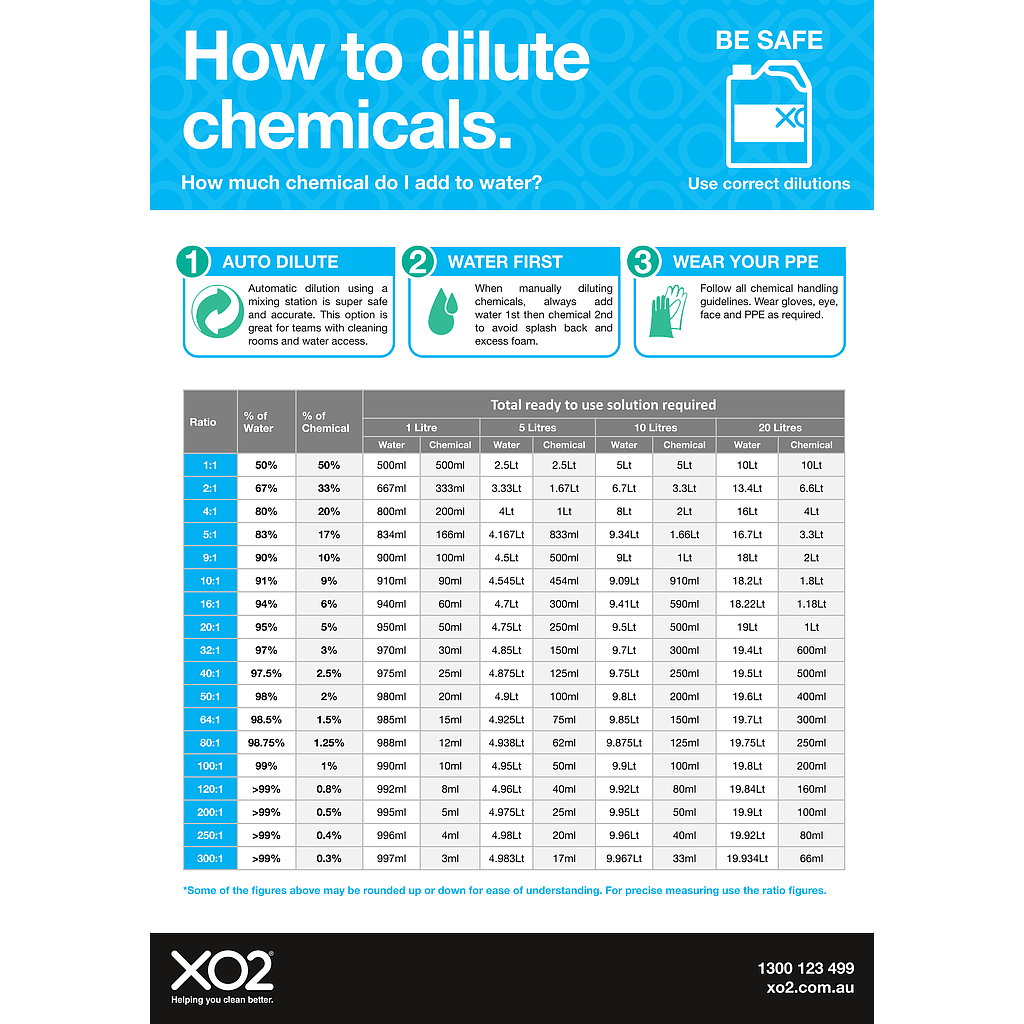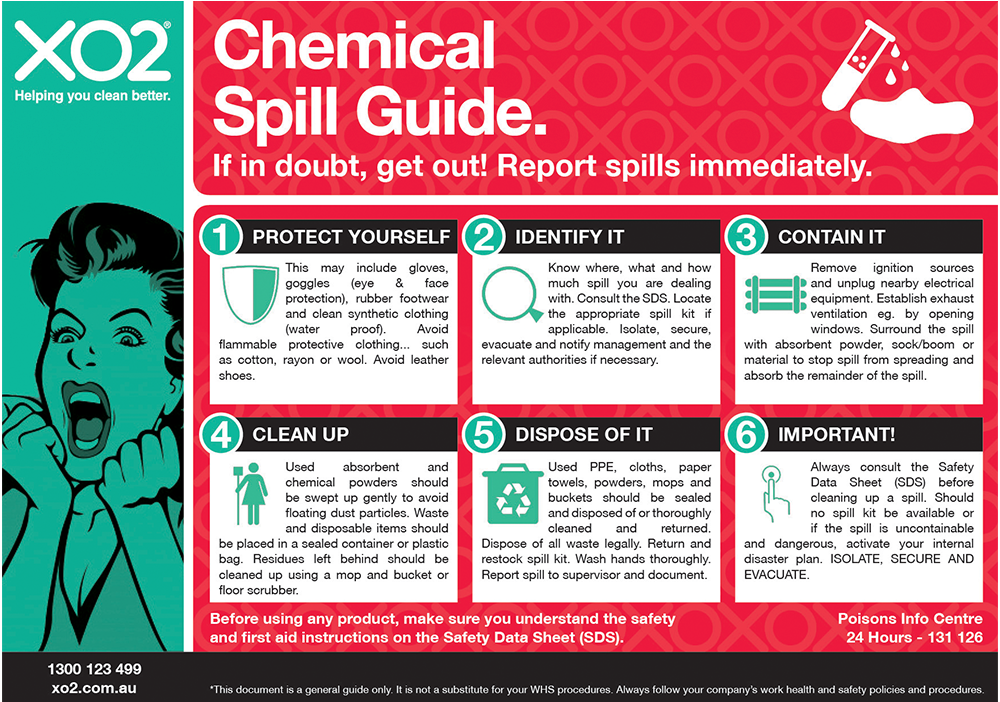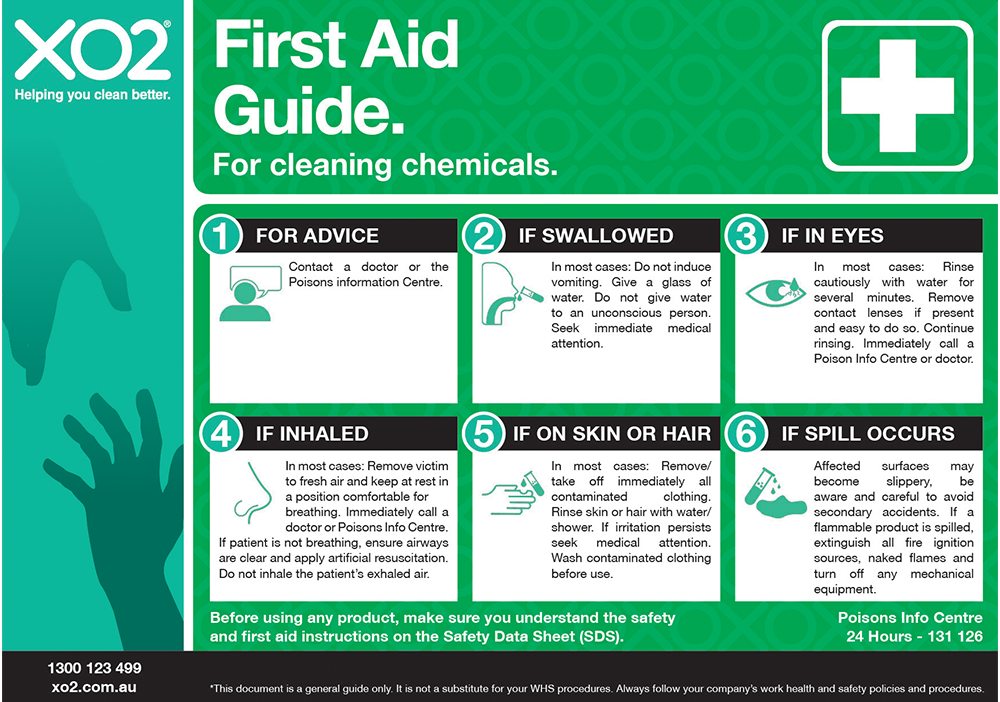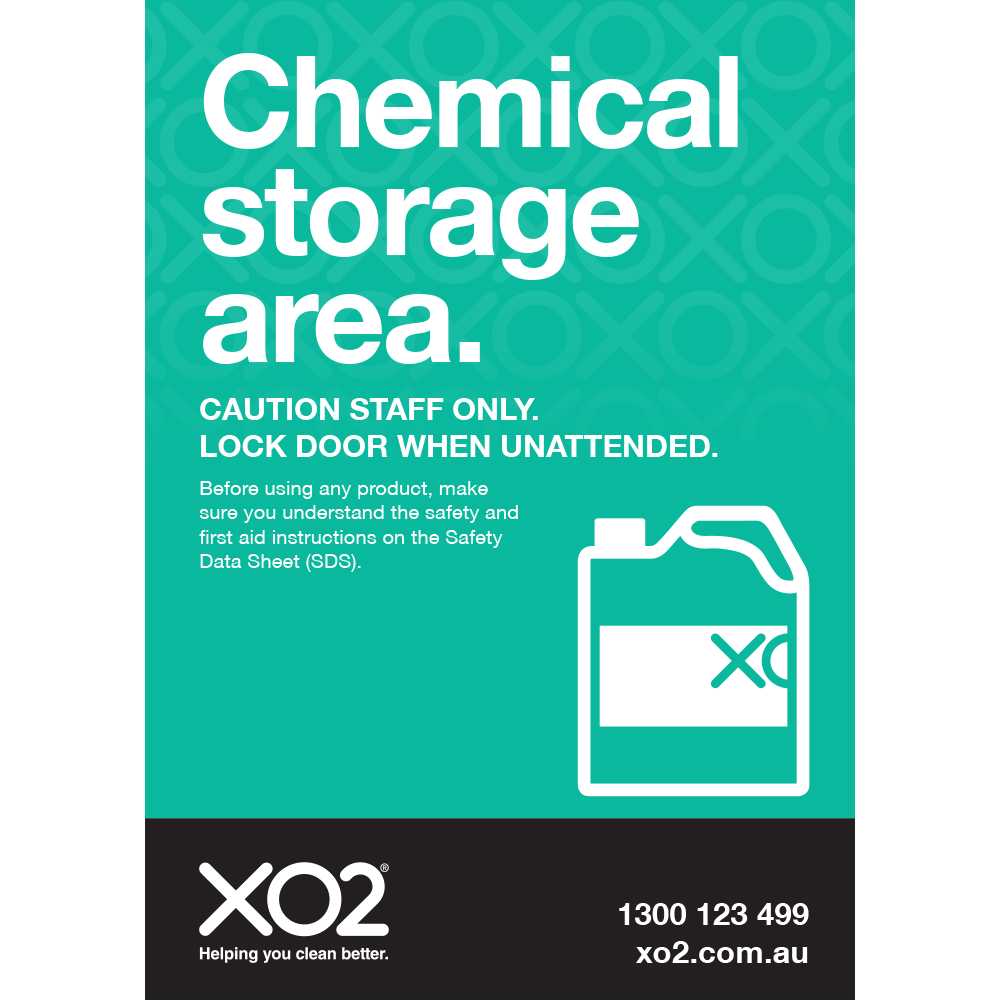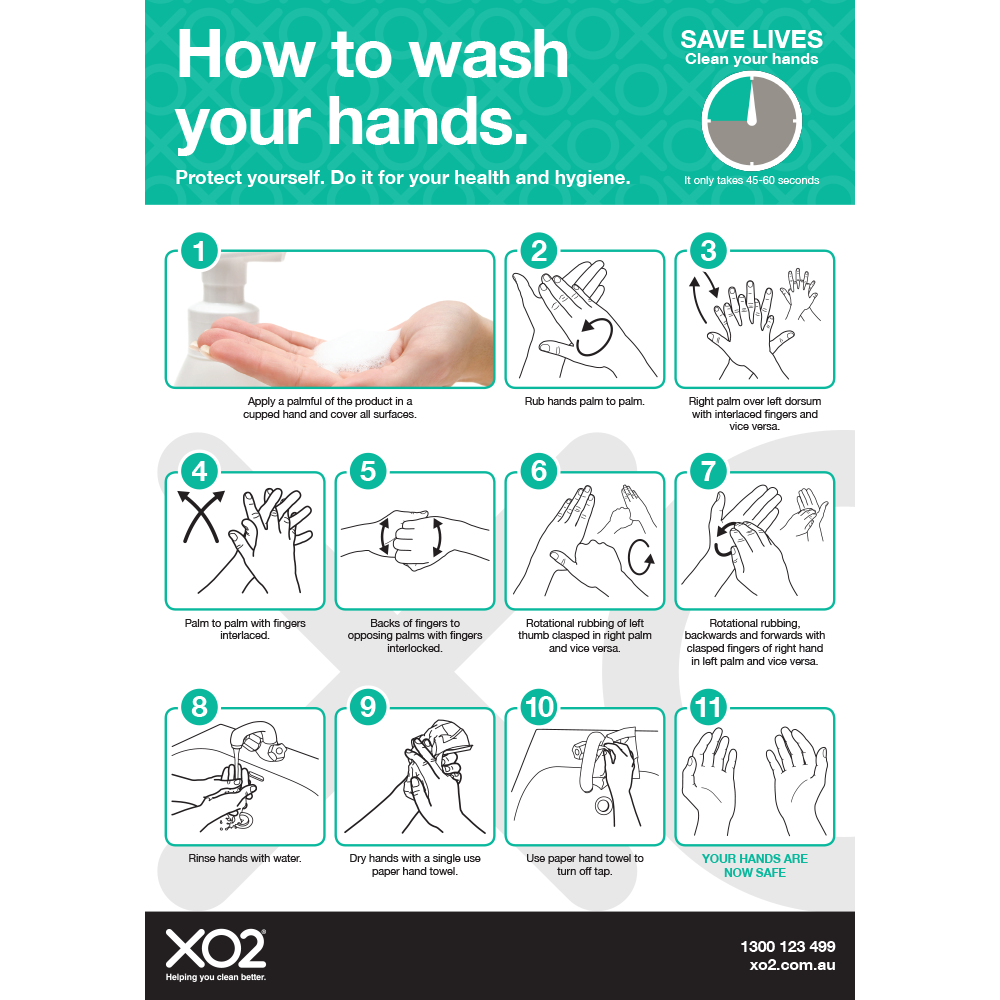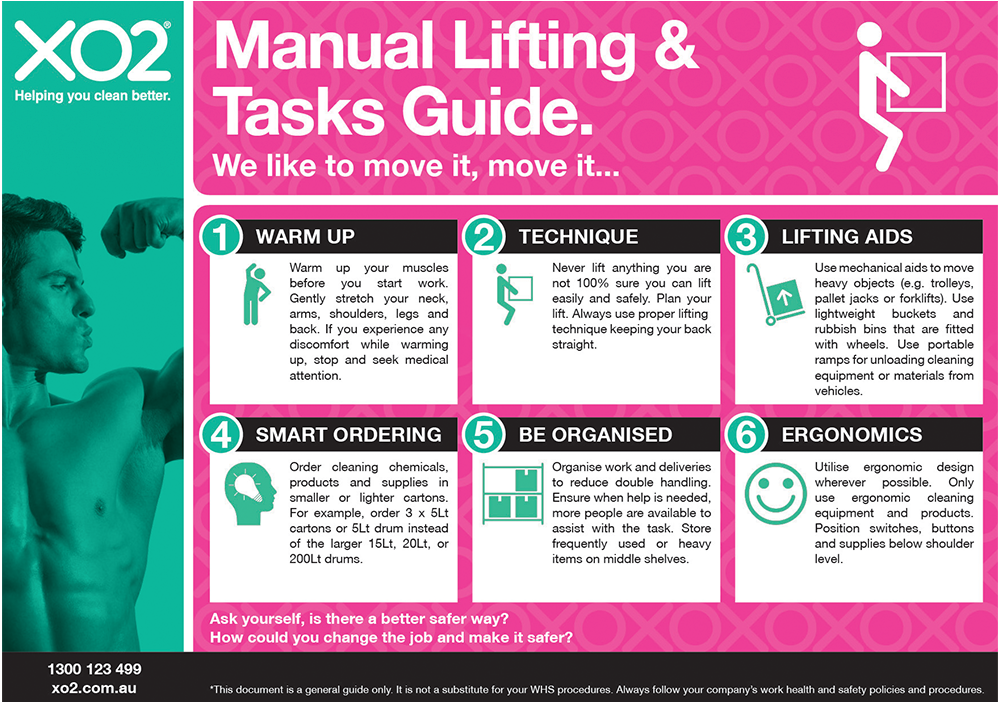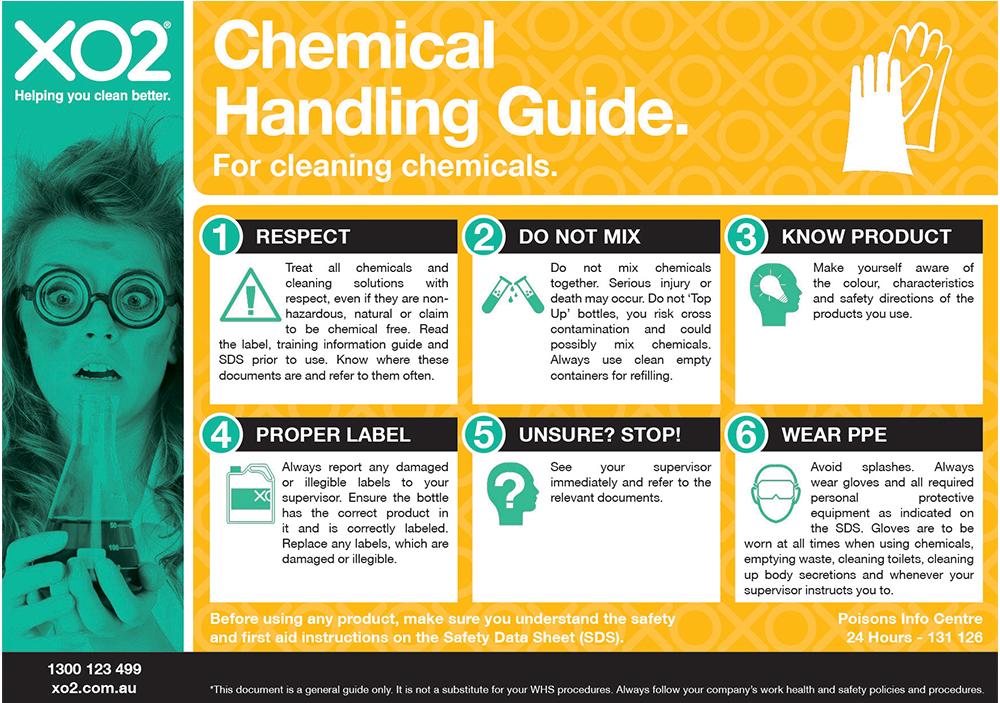Cleaning and hygiene is super important in every workplace. But before we can talk about that, safety must come first. Keeping people safe is our highest priority. Sure, your commercial cleaning chemicals might say they are safe and natural, but that doesn't mean they won't hurt you if used incorrectly. Treating all cleaning products the same, with caution, is the safe way to go.
The following 21 chemical handling safety points below might sound like a list of boring school rules meant to ruin your fun but one of them might just save you plenty pain and suffering. Check them out and feel free to use them in your business. I've put my top 6 at the top of the list.
1. Treat all cleaning chemicals with respect
Treat all chemicals and cleaning solutions with respect, even if they are non-hazardous, natural or claim to be chemical free. Read the label, training information guides and Safety Data Sheets (SDS) prior to use. Know where these documents are and refer to them often.
2. Do not mix cleaning chemicals together
If you do this serious injury or death may occur. Do not ‘Top Up’ bottles, you risk cross contamination and could possibly mix chemicals. Always use clean empty containers for refilling.
3. Know the chemical products you use
Make yourself aware of the colour, characteristics and safety directions of the products you use.
4. Only use cleaning chemicals with a label
Always report any damaged or illegible labels to your supervisor. Ensure the bottle has the correct product in it and is correctly labelled. Replace any labels, which are damaged or illegible.
5. If you’re unsure… STOP!
If you are unsure of anything or have any concerns see your supervisor immediately and refer to the relevant documents.

Stop right there, thank you very much? When it comes to chemical handling, these girls knew the deal.
6. Always wear gloves and all required personal protective equipment (PPE)
Avoid splashes. Always wear gloves and all required personal protective equipment as indicated on the SDS. Gloves are to be worn at all times when using chemicals, emptying waste, cleaning toilets, cleaning up body secretions and whenever you supervisor instructs you to.
7. Dilute cleaning chemicals correctly
Always use cleaning chemicals as per the instructions on the label, training information guides, wall charts and Safety Data Sheets (SDS). Mix and measure correctly. Do NOT over use chemical concentrates when diluting. More chemical does not always do a better job but the right amount will. If you have access to chemical dosing and dilution dispensers, do NOT use it unless you know how to safely operate the system.
Important: When manually diluting cleaning chemicals always add water to the bottle or bucket first, then add the chemical next. This minimises the risk of the concentrated cleaning chemical splashing back at you.
8. Use the right cleaning chemical for the job
Always use the right cleaning chemicals for the right job. If in doubt as to the correct use of the chemical, do NOT use it.
9. Dealing with cleaning chemical drums and bottles
Seal all containers when not in use. Do NOT leave any cleaning chemicals where a child or the general public might have access. Do not open damaged containers, return them or seek advice from your supplier. Do NOT use old drink bottles or food containers to store cleaning chemicals. Mix up fresh solutions daily.
10. Return cleaning solutions after use
When finished with chemicals, wipe down the bottle and store away safely in the chemical cupboard. Keep work and storage areas clean and uncluttered.
11. Know how cleaning chemicals can enter your body and protect yourself
Chemicals can enter your body by absorption (direct contact), inhalation and ingestion. Personal Protection Equipment is not optional and must be worn.
12. In the case of accidents, act immediately!
Report all spills, accidents and safety problems as soon as possible. Ensure spill kits are available and easily accessible. Remove spills as per SDS directions. If unable to contain spills safely report the issue to your supervisor or management immediately.
13. Safety signs must always be used
Whenever a floor surface is wet the risk of a slip-and-fall accident increases and people need to be warned.
14. Ensure first aid kits are easily accessible
15. Store and stack cleaning chemicals safely
Stacking cleaning chemical drums and boxes too high is unsafe and may cause damage. It is advisable to store powders above liquids. Ensure cleaning chemicals are stored in a cool, well-ventilated area away from direct sunlight and out of the reach of children.
16. Wash hands
Always wash your hands regularly and after using cleaning chemicals even if gloves were worn. Good hygiene practices and regular use of hand soap and hand sanitiser are also recommended.
17. Ventilation
Ensure there is good ventilation in the storeroom and when you are using cleaning chemicals. Extra caution should always be exercised when using any kind of spray in a confined space (eg. bathroom).
18. No smoking
Do not smoke anywhere near cleaning chemicals or whilst you are using cleaning chemicals.

These guys might look cool walking away from a chemical fire...but the rest of us won't.
19. Food safety
Do not use any chemicals near food unless they are for a food-related task (eg. Vegetable Sanitiser).
20. Proper lifting techniques
Bend your knees not your back. Avoid any heavy lifting and seek assistance when necessary.
21. Use common sense
Safety is in your hands. Take responsibility for your actions, work safely and protect yourself along with those around you.
Feel free to call our customer care team on 1300 123 499, if you require any help or advice on cleaning chemical safety in your workplace. For more information on our range of safe and natural eco-friendly cleaning products for your workplace, you can check out XO2's cleaning chemicals online.
Stay safe everybody!

David Blamire, CEO at XO2
David is one of Australia's leading cleaning industry innovators. He's spent his entire working life solving cleaning challenges others thought were impossible. He's best known for his product creation and development skills along with a deep knowledge of business operations and all things ERP. In his spare time, David's a keen fisherman and adventurer. And he doesn't mind if you call him Davo.
Get in touch with David at www.xo2.com.au. He works from XO2's national headquarters and manufacturing centre in Queensland, Australia.
Related articles
- 11 Essential Things For a Facility Cleaning Supplies Storeroom
- How To Set Up a Cleaning Chemical Register
- How To Quickly Calculate Cleaning Chemical Dilution Rates And Ratios
- 17 Disinfectant Safety Tips Everyone Should Know
- Why Wearing Disposable Gloves Is Dangerous
- Colour Coding And Better Hygiene For The Cleaning Industry
- The 6 Commandments For Handling Cleaning Chemicals
- How To Prevent Injuries Caused by Slips Trips And Falls
- Everything You Need To Know About pH And Cleaning Chemicals
- The 5 Steps To Safety Success In Your Facility's Cleaning & Hygiene Department
- The 3 Best Places To Get Cleaning Chemical Safety Information
